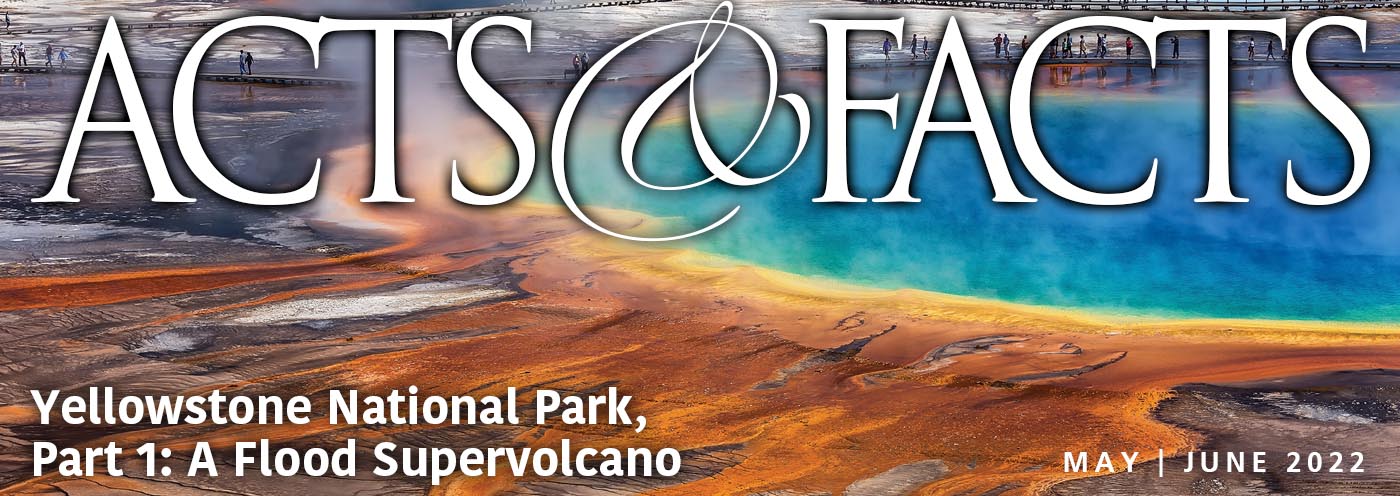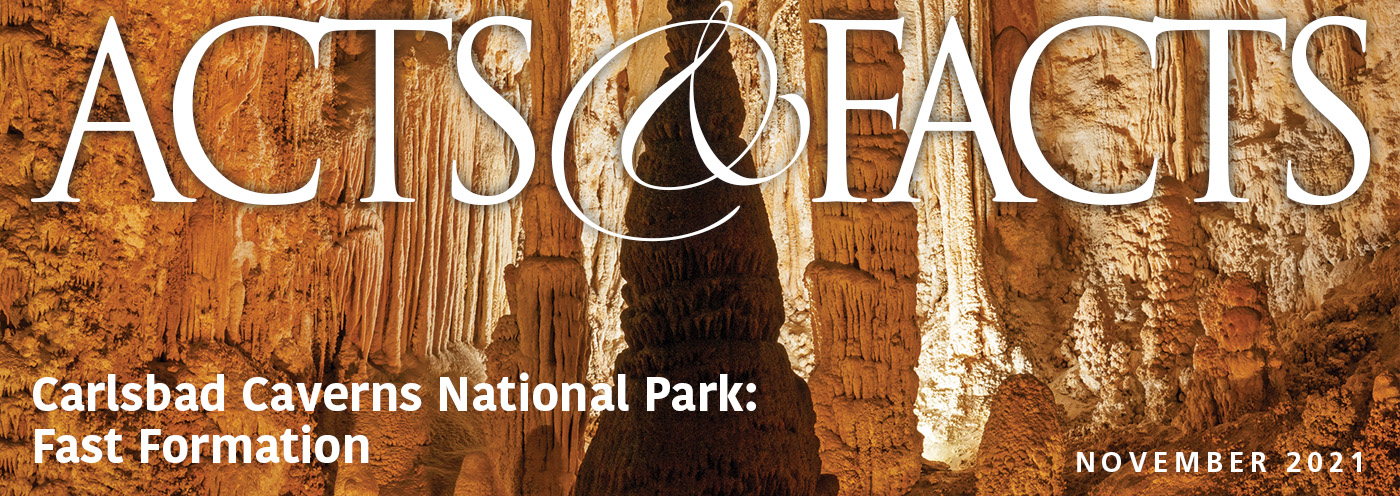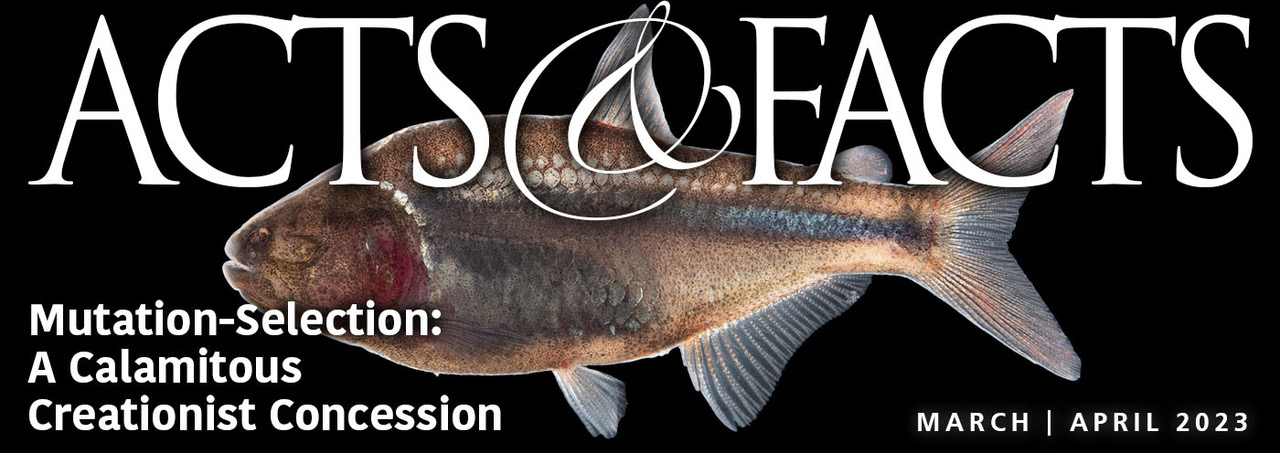Scientists are still trying to out-do each another by finding the biggest dinosaur. Brian Curtice, from the Arizona Museum of Natural History, recently threw his name in the hat with a new analysis of the long-necked dinosaur Supersaurus.1 His findings were presented virtually at the Society of Vertebrate Paleontology’s Annual meeting.
Supersaurus was originally discovered in 1972 by Jim Jensen in Dry Mesa Quarry, Colorado.1 Scientists knew it was a large sauropod, but with a fairly incomplete skeleton, nobody knew exactly how large. So, how did this dinosaur suddenly become so much larger?
After naming Supersaurus, Jensen found what he believed were two other large long-necked (sauropod) dinosaurs buried together. The bone bed at the quarry was so well mixed that Curtice called it a “bone salad.”1
Curtice studied the other bones from the quarry and realized that two of the other dinosaurs, Ultrasaurus and Dystylosaurus, were actually composed of bones from Supersaurus. The three different dinosaurs were in fact all part of one species.
He also found some new neck and tail bones from some unopened jacketed bones at the quarry. Piecing these all together, he estimated that the neck of Supersaurus was longer than 50 feet and the tail longer than 60 feet.1 Altogether, he determined that the sauropod specimen was between 128 and 137 feet in total length.1 By comparison, other diplodocids (such as Seismosaurus) were only about 110 feet long.2
“That is a crazy length—longer than three yellow school buses nose to tail,” Curtice said. “And considering we never find the largest individual in the fossil record, how much longer could these animals have gotten?”1
Although Supersaurus may be the longest dinosaur, the heaviest seems to be Argentinosaurus, another sauropod dinosaur weighing in at an estimated 90 tons, nearly double that of Supersaurus.1 By comparison, ICR scientists have determined that the average dinosaur was about 1,400 pounds, about the weight of an American bison.3
What was the purpose of the large sizes for sauropod dinosaurs like Supersaurus? Large size may have offered protection from predators, similar to large elephants today. And it’s possible that dinosaurs, like pre-Flood humans lived to be many hundreds of years old, continuing to grow year after year.4 Many cold-blooded reptiles today continue to grow throughout their lifetime.
Regardless of the reason for their large sizes, the engineered design of dinosaurs is unmistakable. God had a plan and a purpose for these creatures.
But even the largest of the dinosaurs was no match for the massive tsunami-like waves of the global Flood. Rapid and catastrophic burial about 4,400 years ago is what preserved their bones for us to find today.
Dinosaur exhibits at every major natural history museum in the world give strong evidence for the Flood. The truth of the words of Jesus is right before our eyes.
References
1. Geggel, L. 2021. Supersaurus might be the longest dinosaur that ever lived. LiveScience. Posted on livescience.com November 15, 2021, accessed November 17, 2021.
2. Herne, M. C. and S. G. Lucas. 2006. Seismosaurus hallorum: Osteological reconstruction from the holotype. In Paleontology and Geology of the Upper Morrison Formation. Foster, J. R. and S. G. Lucas, eds. Albuquerque, NM: New Mexico Museum of Natural History and Science, 139-148.
3. Clarey, T. L. and J. P. Tomkins. 2015. Determining average dinosaur size using the most recent comprehensive body mass data set. Answers Research Journal. 8: 85-91.
4. Clarey, T. 2015. Dinosaurs: Marvels of God’s Design. Green Forest, AR: Master Books.
Image: Artist depiction of Supersaurus
Image Credit: Copyright Sean Fox/Fossil Crates © 2021. Adapted for use in accordance with federal copyright (fair use doctrine) law. Usage by ICR does not imply endorsement of copyright holder.
*Dr. Clarey is Research Scientist at the Institute for Creation Research and earned his doctorate in geology from Western Michigan University.
Supersaurus-Sized Dinosaur No Match for the Flood
The Latest
A Uniquely Designed Air-Filled Sac Within Birds’ Lungs
Soaring birds are a majestic sight to behold, especially when they undergo such climbing and endless spiraling so effortlessly. Not surprisingly, evolutionists...
Liberty and the Word of God
“And I will walk at liberty: for I seek thy precepts” (Psalm 119:45).
July 4th is called Independence Day here in our country because on...
July 2025 ICR Wallpaper
"These things I have spoken to you, that in Me you may have peace. In the world you will have tribulation; but be of good cheer, I have overcome...
Valued Longtime ICR Employee Mary Smith Retires
Mary Morris Smith, an employee of the Institute for Creation Research for many years, has retired. The second daughter of ICR founder Dr. Henry M. Morris...
Man of Science, Man of God: George Washington Carver
Who: George Washington Carver
What: Father of Modern Agriculture
When: 1864 or 1865 – January 5, 1943
Where: Diamond Grove,...
The Scopes Monkey Trial: A Battle of Worldviews
Rhea County Courthouse in Dayton, Tennessee, and its statue of William Jennings Bryan
Image credit: M. Mueller
The Scopes Monkey...
Long Non-Coding RNAs: The Unsung Heroes of the Genome
Evolutionary theory holds that all living things came about through random, natural processes. So conventional scientists believe the genome has developed...
Yosemite National Park, Part 1: Tiny Clues of a Grand Picture
Yosemite National Park in California is a sure source of stunning scenery. It’s no wonder that American naturalist John Muir persuaded President...
From Inference to Theory: A Common Design Case Study
Without a doubt, humans, chimpanzees, and other organisms share similar features. An early explanation was that these features reflect similar designs...
Creation Kids: T. rex
by Michael Stamp and Susan Windsor*
You're never too young to be a creation scientist and explore our Creator's world. Kids, discover...















